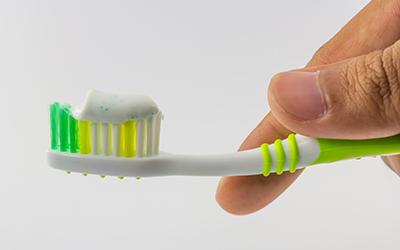Posted on Jul 14, 2025
File ID 33354758 | © Krichie | Dreamstime.com

Maintaining your oral health starts with the tools you use every day—and your toothbrush plays a crucial role. With so many options on the market, it can be difficult to know which type of toothbrush will deliver the best results. Whether you're brushing to prevent cavities, protect a recent dental crown, or prepare for your next dental exam in Castle Rock, selecting the right toothbrush can make a significant difference.
Both manual and electric toothbrushes can be effective when used correctly, but electric models offer distinct advantages for many patients. According to the American Dental Association (ADA), electric toothbrushes—especially those with oscillating-rotating heads—can reduce plaque and gingivitis more effectively than manual brushes.
Here are a few considerations when choosing between manual and electric:
Regardless of which you choose, make sure the brush is ADA-approved and replaced every three to four months—or sooner if the bristles are frayed.
One of the most overlooked factors in toothbrush selection is bristle type. Most dentists recommend soft-bristled toothbrushes for both children and adults. Soft bristles are gentle on the gums and enamel yet effective at removing plaque and food debris. Medium or hard bristles, on the other hand, can cause enamel wear and gum recession over time.
This is particularly important if you’ve recently had a dental crown placed or are undergoing gum disease treatment. Using the wrong type of brush could jeopardize your recovery or damage delicate restorations.
Choosing a toothbrush with the right head size ensures it can reach all areas of the mouth—including the back molars. A brush with a small, compact head is usually the best choice, especially for children or adults with smaller mouths.
Equally important is the handle. A non-slip, ergonomically designed handle can improve grip and control, leading to more effective brushing. This is essential for those managing arthritis or mobility challenges, which can affect consistency in dental hygiene practices.
A worn toothbrush won’t clean your teeth effectively and may harbor bacteria. Replace your brush every three months or immediately following a cold, flu, or oral infection. Keeping up with replacement ensures your brushing routine remains effective between each dental appointment.
Patients who visit for routine dental cleanings often receive new toothbrushes or recommendations on which type to use based on their oral health status. Following this guidance ensures your at-home care complements professional treatments.
If you're unsure about which toothbrush is best for you, bring it up at your next dental exam in Castle Rock. Your dentist can assess your brushing habits, evaluate for signs of gum recession or abrasion, and recommend the best type of toothbrush to meet your needs.
Those with implants, braces, or crowns may require special brushes, such as interdental brushes or electric heads designed for sensitive gums.
Using the right toothbrush is just one part of a comprehensive dental hygiene plan. To protect your oral health:
These habits not only reduce your risk of cavities and gum disease but also make each dental exam in Castle Rock more predictable and less invasive.
Whether you're switching from a manual to an electric toothbrush or simply looking to improve your current brushing technique, the right toothbrush can enhance your overall oral health. With guidance from your dental team and consistent home care, you'll be on the path to healthier gums, stronger teeth, and better outcomes from every dental appointment you attend.